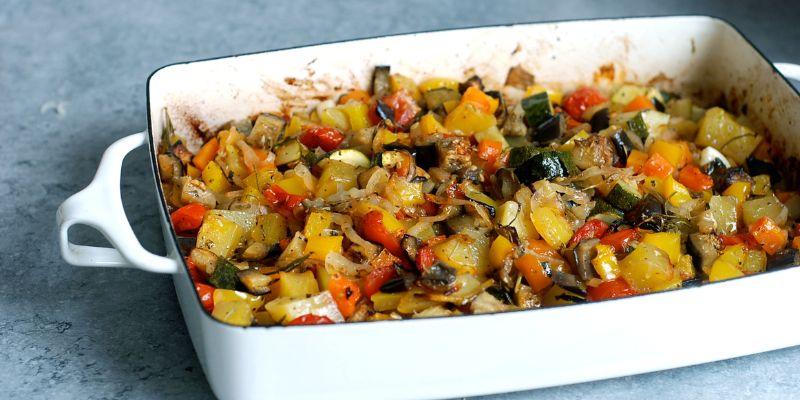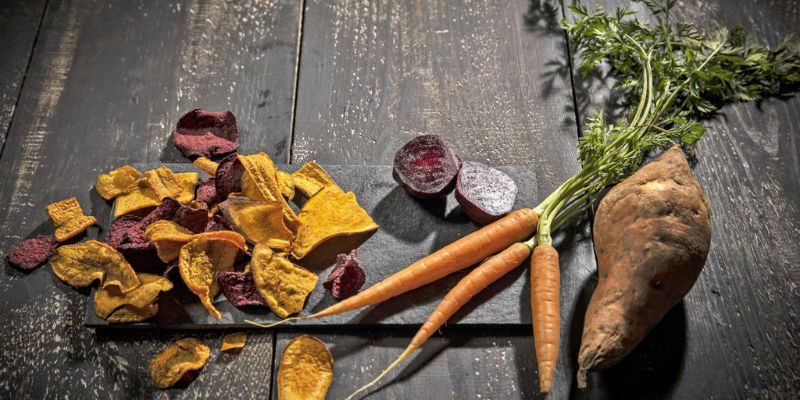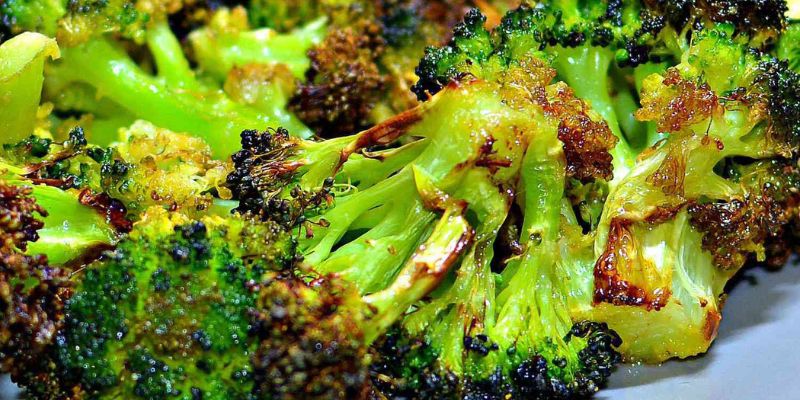Advertisement
Soggy roasted vegetables are a common kitchen disappointment. You anticipate crispy, caramelized edges and delightful textures, but instead, you are faced with limp, soggy veggies. This can turn an otherwise promising meal into a lacklustre experience.
The good news is that perfectly crispy roasted vegetables are within your reach. This post will guide you through proven techniques for permanently banishing soggy vegetables from your roasting pan.
We'll explore the reasons behind this culinary setback and provide practical tips to ensure your vegetables emerge from the oven with the satisfying crunch you crave. Discover how to transform your roasting routine and elevate your vegetable dishes.
Achieving perfectly crispy roasted vegetables can be challenging due to several common pitfalls. Many factors contribute to soggy outcomes, but you can consistently produce crisp, flavorful results by understanding these issues and implementing essential techniques. Let's examine the primary reasons for soggy roasted vegetables and how to address them.

Overcrowding is a frequent cause of soggy roasted vegetables. When too many vegetables are placed on a single pan, they release moisture during cooking. This moisture becomes trapped between the tightly packed pieces, creating a steaming effect rather than allowing for proper roasting.
As a result, the vegetables cook in their juices instead of caramelizing and crisping up. Adequate spacing between vegetable pieces is crucial for proper air circulation, which facilitates even cooking and browning.
Giving each piece enough room allows moisture to evaporate quickly, promoting the development of crispy exteriors and tender interiors.

Another common mistake that leads to sogginess is roasting vegetables at insufficient temperatures. Low heat causes vegetables to cook slowly, releasing moisture without quickly evaporating it. This gradual cooking process prevents the formation of a crispy exterior.
Proper roasting requires high temperatures, typically between 400°F and 425°F (204°C to 218°C), to quickly drive out moisture and initiate caramelization.
Higher temperatures also promote the Maillard reaction, a chemical process that creates complex flavours and appealing brown colours. Using adequate heat ensures that vegetables develop a crispy exterior while maintaining a tender interior.

Failing to thoroughly dry vegetables before roasting significantly contributes to sogginess. Water clinging to vegetables from washing or improper drying introduces excess moisture into roasting.
This additional water must evaporate before the vegetables begin to brown and crisp, often resulting in steamed rather than roasted textures. Proper drying is essential for achieving crispy results.
After washing, vegetables should be thoroughly patted dry with clean kitchen towels or paper towels. For vegetables with high water content, such as zucchini or eggplant, allowing them to air dry quickly can further reduce surface moisture.

With the proper techniques, achieving crispy, flavorful roasted vegetables is attainable. By implementing these essential tips, you can transform your roasting results from soggy disappointments to crispy delights. Let's explore the crucial strategies for perfect roasted vegetables.
Proper oven preheating is crucial for achieving crispy roasted vegetables. Start by setting your oven to a temperature between 400°F and 425°F (204°C to 218°C). Allow it to fully preheat before introducing your vegetables.
This high initial temperature is essential for quickly evaporating surface moisture and initiating the Maillard reaction, which creates complex flavours and appealing browning.
A preheated oven ensures that vegetables begin crisping immediately upon entry rather than slowly cooking and releasing moisture. This rapid heat exposure helps develop a crisp exterior while maintaining a tender interior.
Adequate spacing on the roasting pan is vital for crispy results. Arrange vegetables in a single layer with space between each piece. This arrangement allows hot air to circulate freely around each vegetable, promoting even cooking and browning.
When vegetables are crowded, they release moisture that becomes trapped, leading to steaming instead of roasting. A good rule of thumb is to leave about a quarter-inch of space between pieces.
If necessary, use multiple baking sheets rather than overcrowding a single pan. This spacing strategy ensures that each vegetable piece can develop a crispy exterior.
Oil plays a crucial role in achieving crispy roasted vegetables, but the quantity matters. A light oil coating helps conduct heat, promoting even cooking and browning. However, using less oil can lead to greasy, soggy results.
Aim to lightly coat each vegetable piece with oil rather than dousing them. A suitable method is to toss the vegetables in a bowl with just enough oil to give them a slight sheen.
For most vegetables, 1-2 tablespoons of oil per pound is sufficient. Choose oils with high smoke points, such as avocado or grapeseed oil, for best results at high roasting temperatures.
Thoroughly drying vegetables before roasting is a critical step often overlooked. After washing, use clean kitchen towels or paper towels to pat vegetables completely dry. This step removes excess surface moisture that would otherwise impede the crispy process.
For vegetables with high water content, such as zucchini or eggplant, consider salting them and letting them sit for 30 minutes before patting them dry. This draws out internal moisture, further enhancing their ability to crisp up.
Eliminating excess water before roasting gives your vegetables the best chance to develop a crispy exterior and avoid steaming in their juices.
Some vegetables are naturally better suited for roasting, developing superior flavours and textures under high heat. Root vegetables like carrots, parsnips, and potatoes excel due to their dense structure and natural sugars, which caramelize well.
Cruciferous vegetables such as broccoli, cauliflower, and Brussels sprouts also roast exceptionally, with edges becoming crisp and nutty. Squashes, bell peppers, and onions are excellent choices, too, softening and sweetening when roasted.
While high-water-content vegetables like zucchini can be trickier to prepare correctly, they still yield good results when prepared correctly. Generally, denser vegetables roast better as they withstand prolonged heat without becoming mushy, allowing flavours to concentrate and develop complexity.
Armed with these essential tips, you can transform your roasting game. Say goodbye to soggy disappointments and hello to perfectly crispy, flavorful vegetables. Don't settle for mediocre side dishes any longer.
Head to your kitchen and implement these techniques today. You'll never look back once you experience the satisfying crunch and rich flavours of properly roasted vegetables.
Start your journey to veggie perfection now and elevate every meal with irresistibly crispy roasted vegetables.
Advertisement